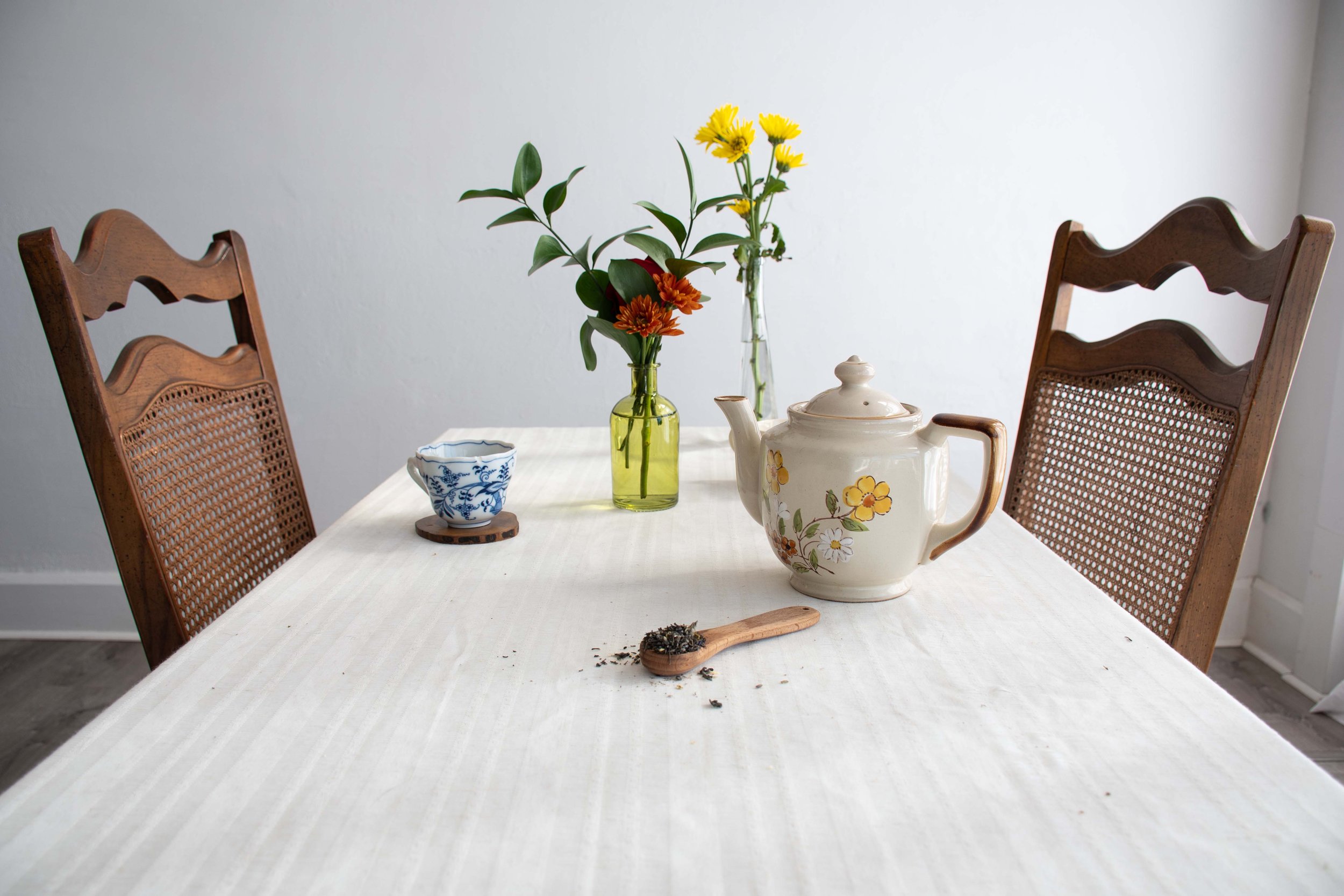
Cottagecore
These gentle and soothing blends are crafted to inspire dreams of a slow, serene life in the cottage of your dreams.
Filter
Oolong & White Teas
Lavender & Thyme
Ti Kwan Yin Blend
Blackberry & Chrysanthemum
White Blend
Hibiscus & Lemongrass
White Blend
Linden & Apple
Ti Kwan Yin Blend
Calendula & Rose
White Blend
Orange Blossom & Cherry
White Blend
Oolong Tea Leaf Guide
-
The term “Formosa” translates to “The Beautiful Island” and is always used to describe teas from Taiwan. Taiwanese oolong teas are renowned for their floral aroma, strong flavor, and their bold and creamy mouthfeel.
-
Ti Kwan Yin, or Iron Goddess Oolong tea is a tightly rolled Chinese Oolong tea that originated in 19th century Anxi, in the Fujian Province. It has a very floral aroma, with a very complex floral taste with warm, roast-y notes.
The Wei legend of Ti Kwan Yin tea:
In Fujian's Anxi County, there was a run-down temple which held an iron statue of Guanyin, the Bodhisattva of Compassion. Every day on the walk to his tea fields, a poor farmer named Wei would pass by and reflect on the temple's worsening condition. "Something has to be done," he thought.
Being poor, Wei did not have the means to repair the temple. One day, he brought a broom and some incense from his home. He swept the temple clean and lit the incense as an offering to Guanyin. "It's the least I can do," he thought to himself. And he did this twice a month for many months.
One night, Guanyin appeared to him in a dream, telling him of a cave behind the temple where a treasure awaited. He was to take the treasure and share it with others. In the cave, the farmer found a tea shoot. He planted it in his field and nurtured it into a large bush, from which the finest tea was produced. He gave cuttings of this rare plant to all his neighbors and began selling the tea under the name Tieguanyin, Iron Bodhisattva of Compassion.
Over time, Wei and all his neighbors prospered; the run-down temple of Guanyin was repaired and became a beacon for the region. From this time onwards Mr. Wei took joy in the daily trip to his tea fields, never failing to stop in appreciation of the beautiful temple





